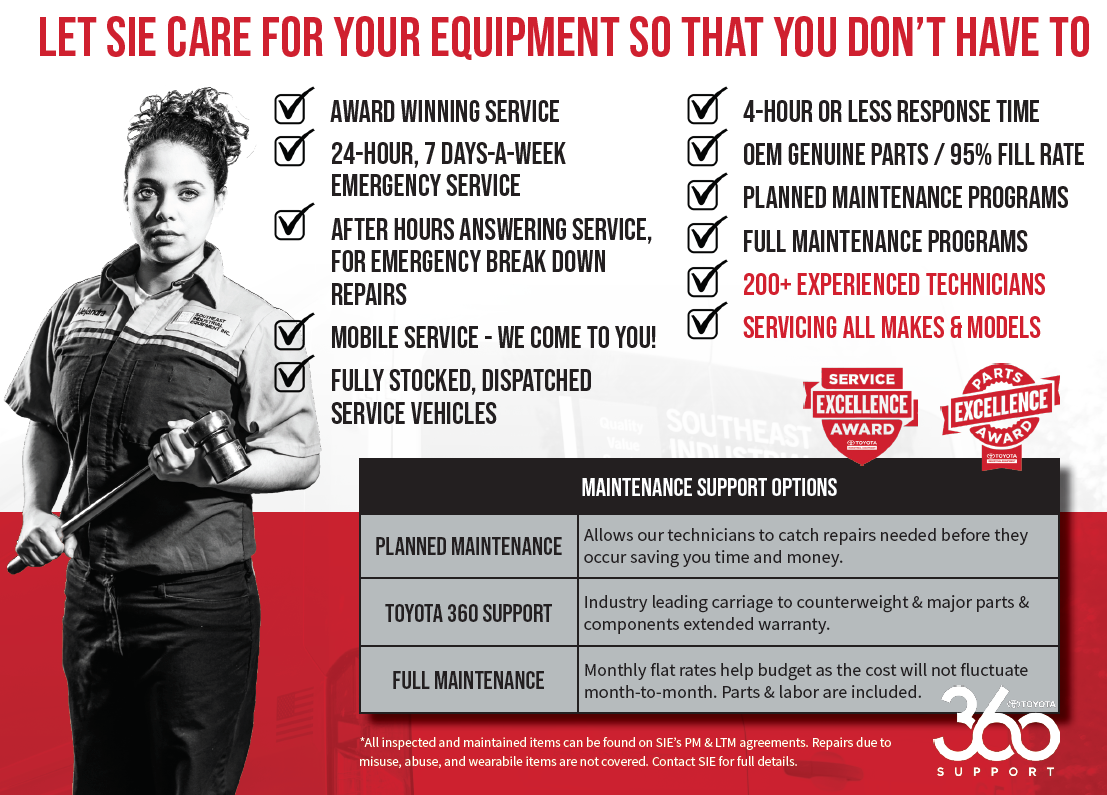Forklifts are designed to be durable and reliable, but like any other machinery, they require regular maintenance to function at their optimal level. Forklift maintenance can be categorized into two types: planned maintenance and full maintenance. In this blog, we will explore the difference between these two types of maintenance for forklifts.
Planned Maintenance
Planned maintenance is also known as preventive maintenance. It involves a regular schedule of maintenance tasks that are performed on the forklift to prevent breakdowns and extend the lifespan of the equipment. These tasks may include inspecting and lubricating the forklift’s moving parts, replacing worn-out parts, and checking the battery, brakes, and hydraulic system. Planned maintenance is usually scheduled at regular intervals, depending on the manufacturer’s recommendations, the intensity of usage, and other factors. The frequency of planned maintenance can range from daily to annually, depending on the type of forklift and its usage. The advantage of planned maintenance is that it helps to prevent breakdowns and prolong the lifespan of the forklift. By detecting and repairing minor issues early, it reduces the risk of major breakdowns and expensive repairs in the long run. Planned maintenance also ensures that the forklift is always in good working condition, which increases safety and efficiency in the workplace.
Full Maintenance
Full maintenance, on the other hand, is also known as corrective maintenance. It involves repairing or replacing parts that have failed or malfunctioned due to wear and tear or other reasons. Full maintenance is usually performed after a breakdown or when the forklift is not functioning correctly. Full maintenance is more expensive than planned maintenance because it involves diagnosing the problem, sourcing for replacement parts, and carrying out repairs. Full maintenance can also take longer than planned maintenance, depending on the extent of the repairs needed. The advantage of full maintenance is that it ensures that the forklift is functioning correctly and safely. It also helps to prevent further damage to the forklift and extends its lifespan. However, full maintenance can be costly, time-consuming, and disruptive to the workplace.
In conclusion, both planned maintenance and full maintenance are essential for the proper functioning and longevity of forklifts. While planned maintenance focuses on preventing breakdowns and prolonging the lifespan of the equipment, full maintenance involves repairing or replacing parts that have failed or malfunctioned. Planned maintenance is more cost-effective and less disruptive to the workplace, while full maintenance is essential when breakdowns occur or when the forklift is not functioning correctly. A well-planned maintenance schedule is crucial for ensuring the safe and efficient operation of forklifts in the workplace. To request service on your forklift you can submit an online request here.
